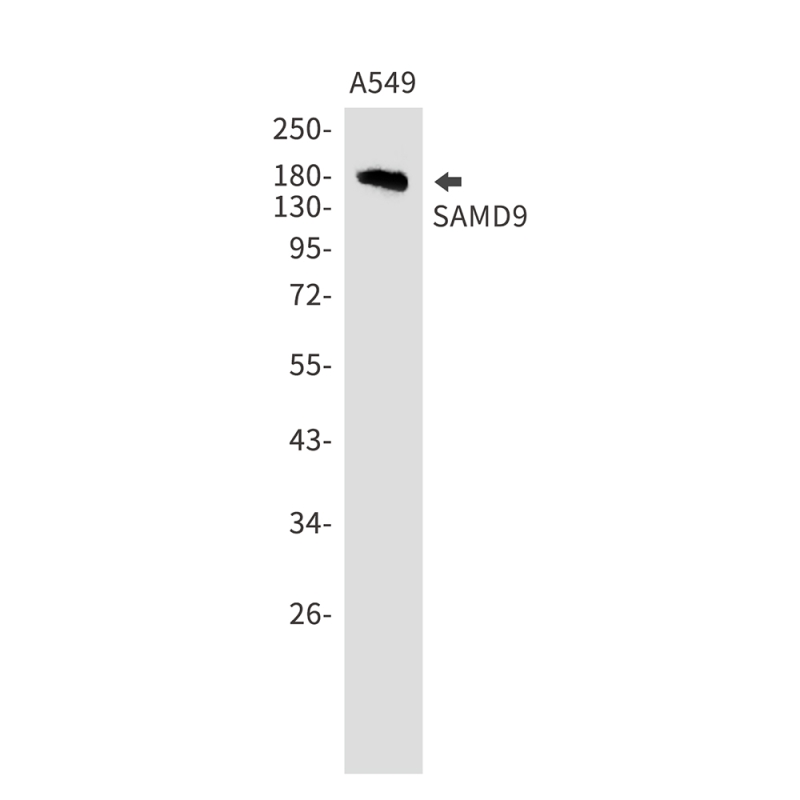
| WB | 1/500-1/1000 | Human,Mouse,Rat |
| IF | 咨询技术 | Human,Mouse,Rat |
| IHC | 咨询技术 | Human,Mouse,Rat |
| ICC | 1/50-1/200 | Human,Mouse,Rat |
| FCM | 咨询技术 | Human,Mouse,Rat |
| Elisa | 咨询技术 | Human,Mouse,Rat |
| Aliases | SAM domain-containing protein 9 |
| Entrez GeneID | 54809 |
| WB Predicted band size | Calculated MW: 184 kDa; Observed MW: 184 kDa |
| Host/Isotype | Rabbit IgG |
| Antibody Type | Primary antibody |
| Storage | Store at 4°C short term. Aliquot and store at -20°C long term. Avoid freeze/thaw cycles. |
| Species Reactivity | Human |
| Immunogen | A synthetic peptide of human SAMD9 |
| Formulation | Purified antibody in TBS with 0.05% sodium azide,0.05%BSA and 50% glycerol. |
+ +
以下是关于SAMD9抗体的3篇代表性文献及其摘要概括:
---
1. **文献名称**: *"Germline SAMD9 Mutations Cause Normophosphatemic Familial Tumoral Calcinosis"*
**作者**: Chefetz et al. (2019)
**摘要**: 研究通过基因测序和免疫组化(使用SAMD9特异性抗体)发现,SAMD9的种系突变导致家族性钙质沉着症,揭示了SAMD9在磷酸盐代谢及软组织钙化中的调控作用,抗体用于检测突变蛋白的异常表达。
---
2. **文献名称**: *"SAMD9 mutations in a novel subtype of familial myelodysplastic syndrome"*
**作者**: Chen et al. (2018)
**摘要**: 报道了SAMD9突变与家族性骨髓增生异常综合征的关联,通过构建SAMD9敲除小鼠模型并利用特异性抗体检测蛋白表达,证实其通过干扰素信号通路影响造血干细胞功能。
---
3. **文献名称**: *"Antibody-based profiling of SAMD9 in pediatric myelodysplastic syndromes"*
**作者**: Yoshida et al. (2020)
**摘要**: 开发了一种高灵敏度的SAMD9单克隆抗体,用于儿童骨髓异常增生综合征患者的组织样本分析,发现SAMD9过表达与疾病进展和化疗耐药性显著相关。
---
**备注**:若需获取全文或更多文献,建议在PubMed或Web of Science中检索关键词“SAMD9 antibody”或“SAMD9 immunolocalization”,并筛选近五年内的研究。部分文献可能侧重基因功能而非抗体技术细节,需结合需求进一步筛选。
×